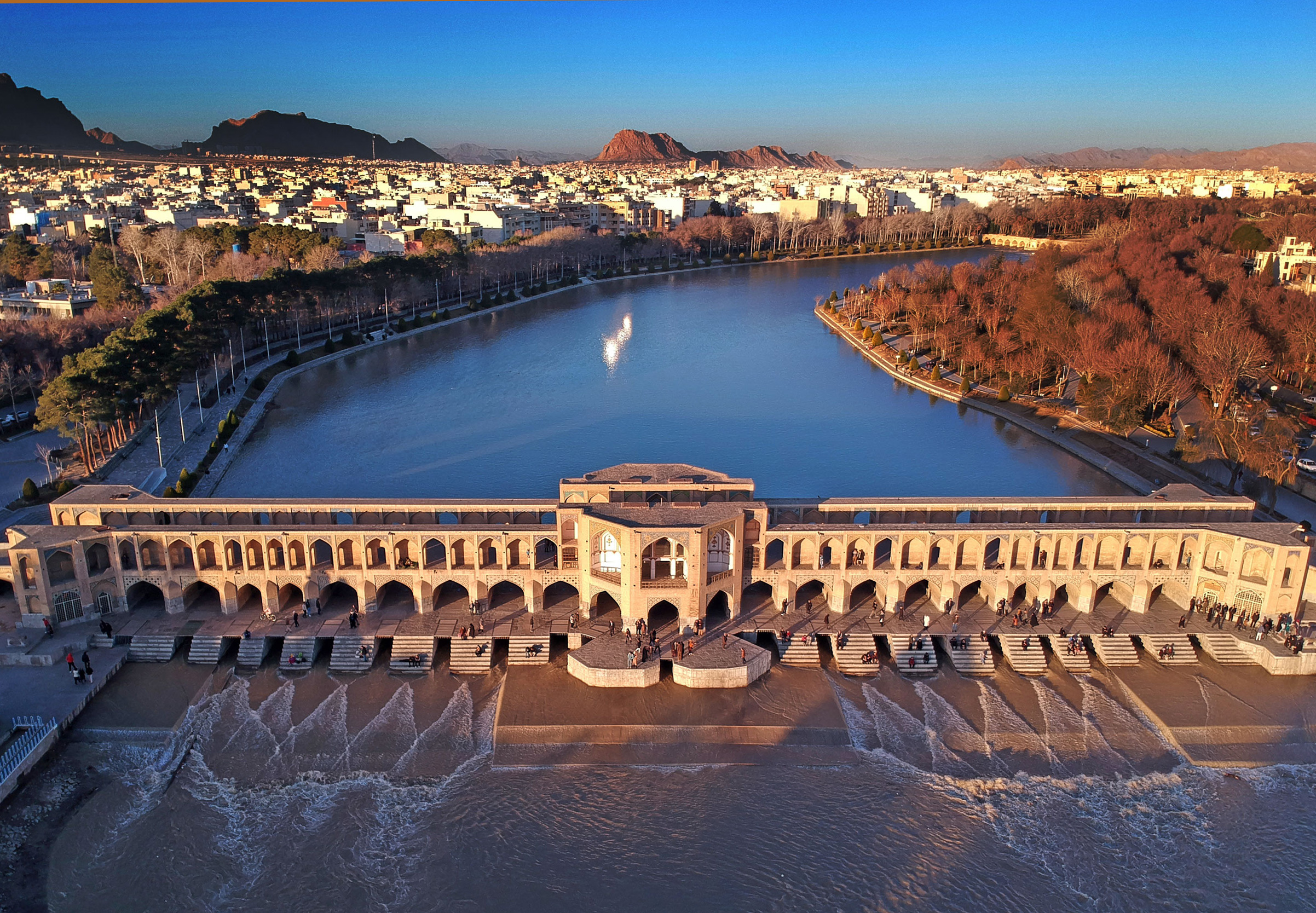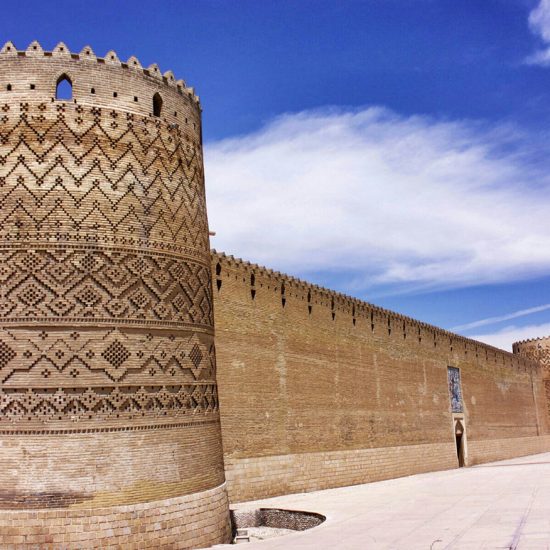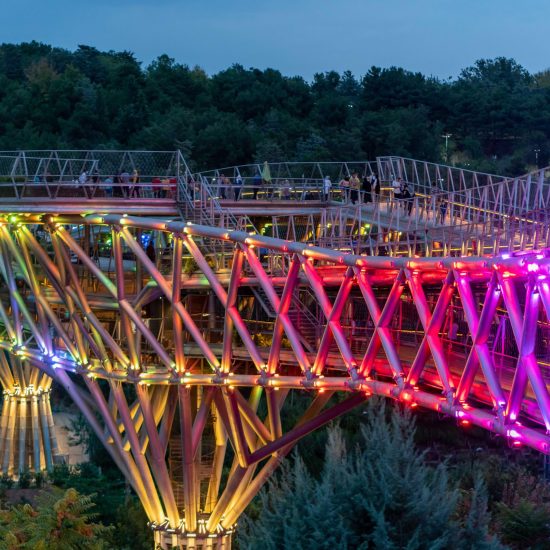
Khaju Bridge, Isfahan
Located in the historic city of Isfahan, Iran, the Khaju Bridge (Pol-e Khaju) is widely regarded as one of the most beautiful and architecturally sophisticated bridges in the world.
Built during the Safavid dynasty in the mid-17th century, this bridge is not only a functional crossing over the Zayandeh River but also a masterpiece of Persian architecture, known for its elegance, symmetry, and cultural significance.
Historical Background
Constructed around 1650 under the rule of Shah Abbas II, Khaju Bridge was designed to serve multiple purposes: a pedestrian bridge, a dam, and a social hub.
It was built on the foundations of an earlier Timurid bridge, transforming it into a vibrant center for gatherings, festivities, and royal viewings of water ceremonies.
Architectural Highlights
Khaju Bridge is famous for its dual functionality as both a bridge and a weir. Its elegant form includes:
- Length & Arches:
Spanning about 133 meters with 23 arches, it offers a scenic walkway with stunning river views. - Two-Level Design:
The upper level served as a roadway and promenade, while the lower level contains sluice gates that regulate water flow for irrigation and seasonal river management. - Central Pavilion:
Once reserved for royal family members, this octagonal structure provided a panoramic view of the river and was used for hosting guests and public gatherings. - Tilework & Artistry:
The bridge features intricate Safavid tilework, geometric patterns, and poetic inscriptions, all of which make it an icon of Persian art and engineering.
Cultural and Social Significance
Khaju Bridge was not just a crossing—it was a vibrant social and cultural center. Locals still gather beneath the arches to sing traditional songs, play music, or simply enjoy the soothing sound of the water cascading through the sluices.
Today, it remains a popular meeting point, especially at sunset when the bridge glows under the evening lights, and the reflections dance across the Zayandeh River.


